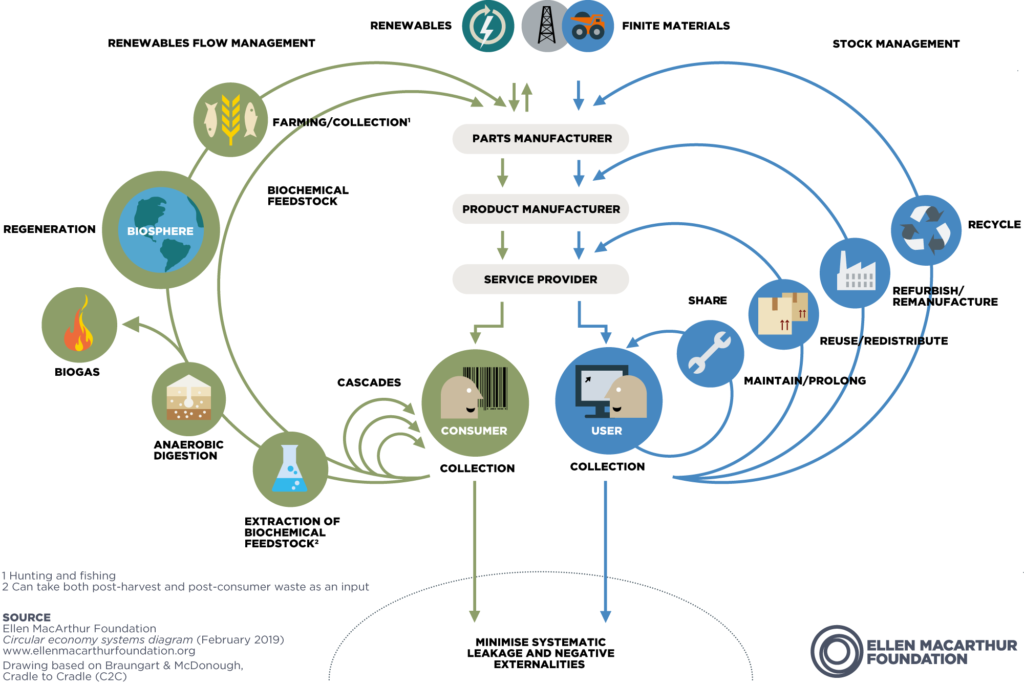Waste Not, Want Not

Where We Have Been
Waste generation and management have been a concern for centuries. In the Medieval period, tanneries, slaughterhouses, textile production, rotting garbage, and human and animal waste turned the air putrid and spread disease. The late 1600s introduced the invention of the steam engine and ushered in the Industrial Revolution. Though unprecedented in its significance to our historical timeline, the Industrial Revolution also introduced new challenges for dealing with waste. New smelting and manufacturing processes produced a plethora of associated wastes and chemical contaminants that were discharged into the air, water, and soil at a scale never seen before. Major eras in human history, like the consolidation of cities and the Industrial Revolution, for example, forced us to address and reevaluate how we deal with the generation and management of waste on a large scale. Today is no different.
I have experienced the negative impacts of wastes and pollutant discharges while living near the Great Lakes, including algae blooms and fish kills. I remember the Cuyahoga River catching on fire in 1969 and I participated in the first Earth Day as a teenager in 1970. I began my 40-year environmental career shortly after the 1978 Love Canal, Niagara Falls, New York chemical waste story broke. The USEPA called it “one of the most appalling environmental tragedies in American history.”
Where We Are
Despite centuries of advancements in waste management and decades of regulations, waste generation and disposal are still global issues that need to be addressed, as the volume of waste continues to grow. The effect of this, if left unchecked, will continue to have detrimental effects on our environment and our quality of life – for us and future generations.
Based on recent studies by The World Bank Group and The Global E-waste Monitor 2020, an estimated 2.01 billion tonnes of municipal solid waste were generated in 2016. This number is expected to grow to 3.40 billion tonnes by 2050 under a business-as-usual scenario. The studies note that:
- Lower–income countries generally rely on the open dumping of their waste. The total quantity of waste generated in low-income countries is expected to increase by more than three times by 2050.
- Food and green waste comprise more than 50 percent of waste in low– and middle-income countries.
- Recyclables make up a substantial fraction of waste streams, ranging from 16% paper, cardboard, plastic, metal, and glass in low-income countries to about 50% in high-income countries. Evidence shows that recyclables, if not properly managed, will end up in landfills or open dumps.
- As countries raise in income level, the quantity of recyclables in the waste stream increases, with paper waste increasing most significantly.
- On average, the approximate total weight of global electronic and electrical equipment consumption increases annually by 2.5 million metric tons.
- In 2019, the world generated a staggering 53.6 million metric tons of e-waste, which is an average of 7.3 kg per capita. This is equivalent to throwing out about 1000 laptops every single second.
- The fate of 82.6% of e-waste generated in 2019 is uncertain. Its whereabouts and environmental impact vary across the different regions.
- In middle- and low-income countries, e-waste management infrastructure is not yet fully developed or, in some cases, is absent. Hence, e-waste is managed mostly by the informal sector and is often handled under inferior conditions. This causes severe health effects to workers as well the children who often live, work, and play near e-waste management activities.
Based on the findings of these studies, there is a significant disparity between developed and underdeveloped countries with regards to solid waste generation rates and the subsequent management of that waste.
Where We Need to Go
Think and act differently. The Ellen MacArthur Foundation works with corporations to transition and moves current waste practices and habits from a linear economy (i.e., take, make, waste) to a circular economy (i.e., design out waste and pollution, keep products and materials in use, and regenerate natural systems), ultimately achieving zero waste.

[Ellen Macarthur Foundation https://www.ellenmacarthurfoundation.org/circular-economy/concept/infographic]
Additionally, under the TRUE (Total Resource Use and Efficiency) definition, “Zero Waste is a goal that is ethical, economical, efficient, and visionary, to guide people in changing their lifestyles and practices to emulate sustainable natural cycles, where all discarded materials are designed to become resources for others to use.” This means that companies and individuals work to:
- Design and manage products and processes to systematically avoid and eliminate the volume and toxicity of waste and materials.
- Conserve and recover all resources.
- Not burn or bury them.
Implementing zero waste will eliminate discharges to land, water, or air that are a threat to planetary, human, animal, or plant health. Benefits of a zero waste strategy include:
- Saving money: Waste is a sign of inefficiency and the reduction of waste reduces costs.
- Progressing faster: A zero waste strategy improves upon production processes and environmental prevention strategies, which can lead to larger, more innovative steps.
- Supporting sustainability: A zero waste strategy supports the three Ps – people, planet, and profit.
- Improving material flows: A zero waste strategy uses fewer new raw materials and sends no waste materials to landfills, incineration (waste-to-energy), and the environment.
It Starts With Us
Several major multinational companies, like Microsoft, Intel, and Amazon are taking leadership roles and have included in their corporate strategies initiatives to achieve zero waste, carbon neutrality, and reduce climate change impacts.
Here at Bridge Partners, we are following suit with sustainability leaders to commit to a strong set of sustainability goals, which I am very proud of. This includes being Zero Waste Certified by 2025:
We strive to be a leader in the circular economy because it is the right thing to do. Because we operate with a globally distributed workforce, we will engage all employees in waste reduction efforts across office settings and remote workspaces.
How can you create a waste reduction strategy? Start by making some daily, simple changes. Did you know that billions of coffee capsules end up in landfills every year? Take the plastic coffee pods from our morning coffee, for example. Did you know most non-compostable plastic pods or grounds are not being recycled or composted, and are dumped by the billions into landfills? Don’t throw them in the trash. Recycle or compost them, instead.
We can learn from difficult times in our history, like the Great Depression, where our parents and grandparents generated less waste and conserved more because they had to, for their families to get by. Here are 60 Frugal Hacks you can do at home.
When it comes to waste generation and management, we are at a critical point in time. The future is here-and–now. It starts with us, our companies, our customers, and our suppliers. It’s time to act and a make difference for our families, our future generations, and Mother Earth.
Our purpose at Bridge Partners is to create opportunity and constructive impact for our customers, our people, and our communities in a sustainable and responsible way. We are taking immediate action against climate change, and guide our clients to do the same. Read our sustainability commitments here.
About the author



